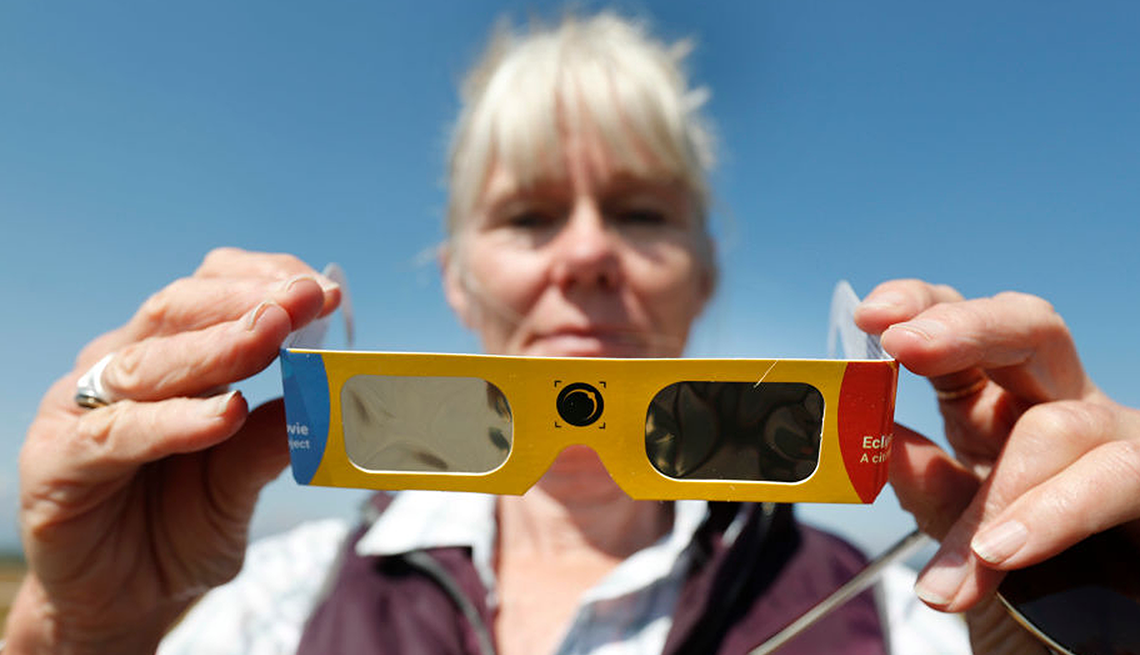
Solar eclipse vision safety tips
- Select a language for the TTS:
- UK English Female
- UK English Male
- US English Female
- US English Male
- Australian Female
- Australian Male
- Language selected: (auto detect) - EN
Play all audios:

CAN YOU LOOK AT A TOTAL SOLAR ECLIPSE WITH THE NAKED EYE WITHOUT CAUSING DAMAGE? If you are in an area with a total solar eclipse, you can look directly at the blocked sun but only during
the time the sun is completely blocked. That path is about 115 miles wide. Within that path, the closer you are to the center of it, the longer the eclipse lasts. In Southwest Texas, for
example, it will last just under 4½ minutes. The further you get from the center of the path the less time the sun will spend in what astronomers call totality. During that phase, when
the sun is completely hidden by the moon, the brightness is about the same as a full moon, says Fienberg, who has a doctorate in astronomy. In fact, if you are wearing solar glasses during
totality, you won’t be able to see it. “You are able to see the sun’s very hot, very tenuous, very rarefied outer atmosphere called the corona,” he says. “If you were to keep your eclipse
viewers on during totality, you would literally see nothing, because it’s so much fainter than the bright sun’s face.” As soon as the sun peeks out again, he says, you immediately need to
put on your glasses because it’s no longer safe to look at it directly. CAN YOU TAKE PHOTOS OF A TOTAL SOLAR ECLIPSE? To take a photo of a partial solar eclipse, you need to have a special
filter on your smartphone or camera. If you look through a camera lens without solar filters, the rays can be amplified and burn your eyes. A partial eclipse can also damage the sensor in a
camera or your smartphone camera. Fienberg said you can either get special filters or cut the film from solar glasses and tape it over your cellphone. If you are careful, you then can look
at the smartphone screen to take a picture, but he says this can still be dangerous because it’s tempting to peek around the phone at the partial eclipse. Do not use unfiltered cameras or
binoculars, even while wearing solar glasses, Fienberg warns. “You mustn’t look through any kind of optics while wearing eclipse glasses because whether it’s a telescope, binoculars or a
telephoto lens, it’s going to concentrate way too much light right onto that filter and melt it,” he says. “I’ve tested it. It doesn’t take more than a couple of seconds.” TAKE IN THE MAGIC
Fienberg, who has seen 14 total solar eclipses and will view this one from a cruise ship off Mazatlán, Mexico, with other eclipse enthusiasts, says this rare sight is not to be missed.
“It’s really something that everybody should experience, just like I would say everybody should have the good fortune to fall in love someday.” [embedded content]
